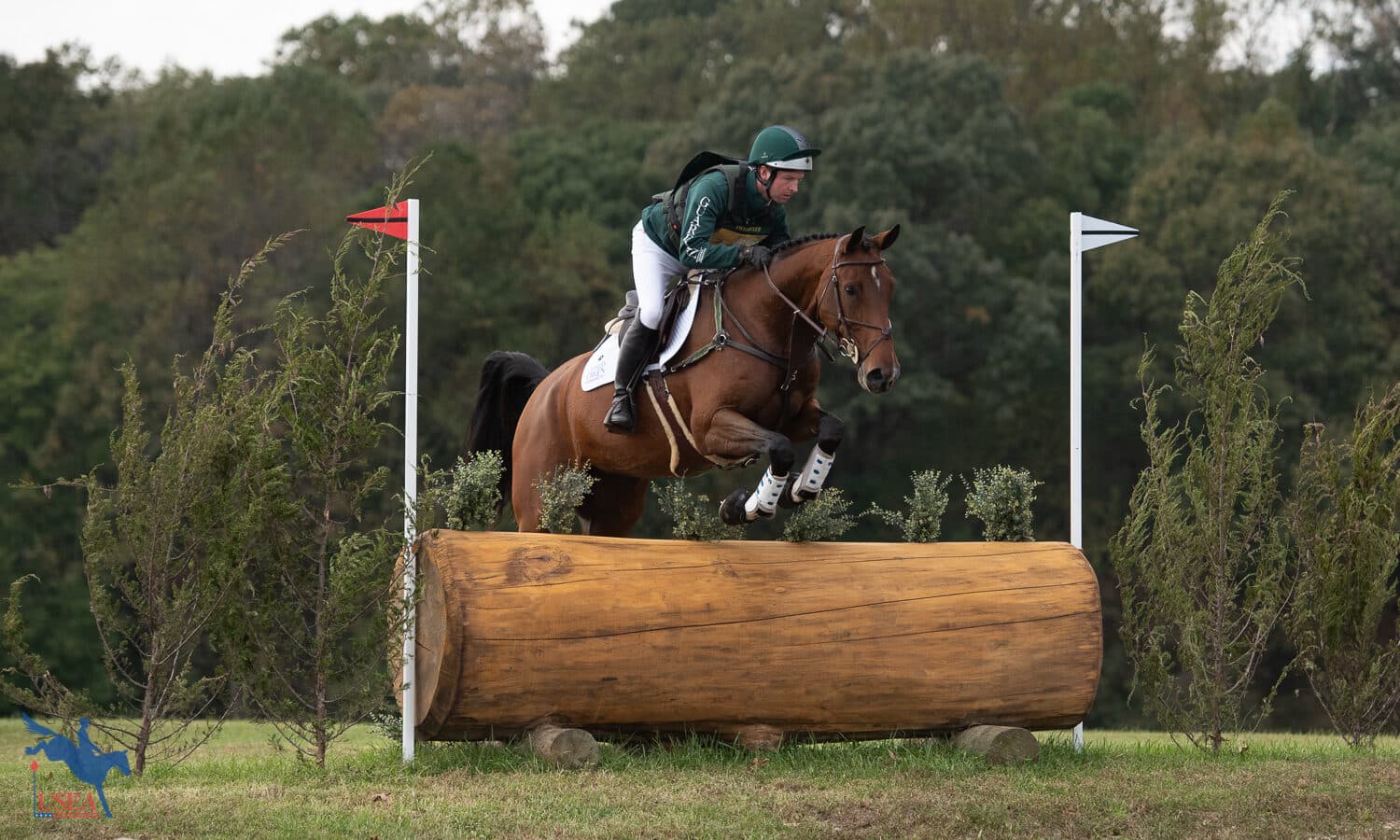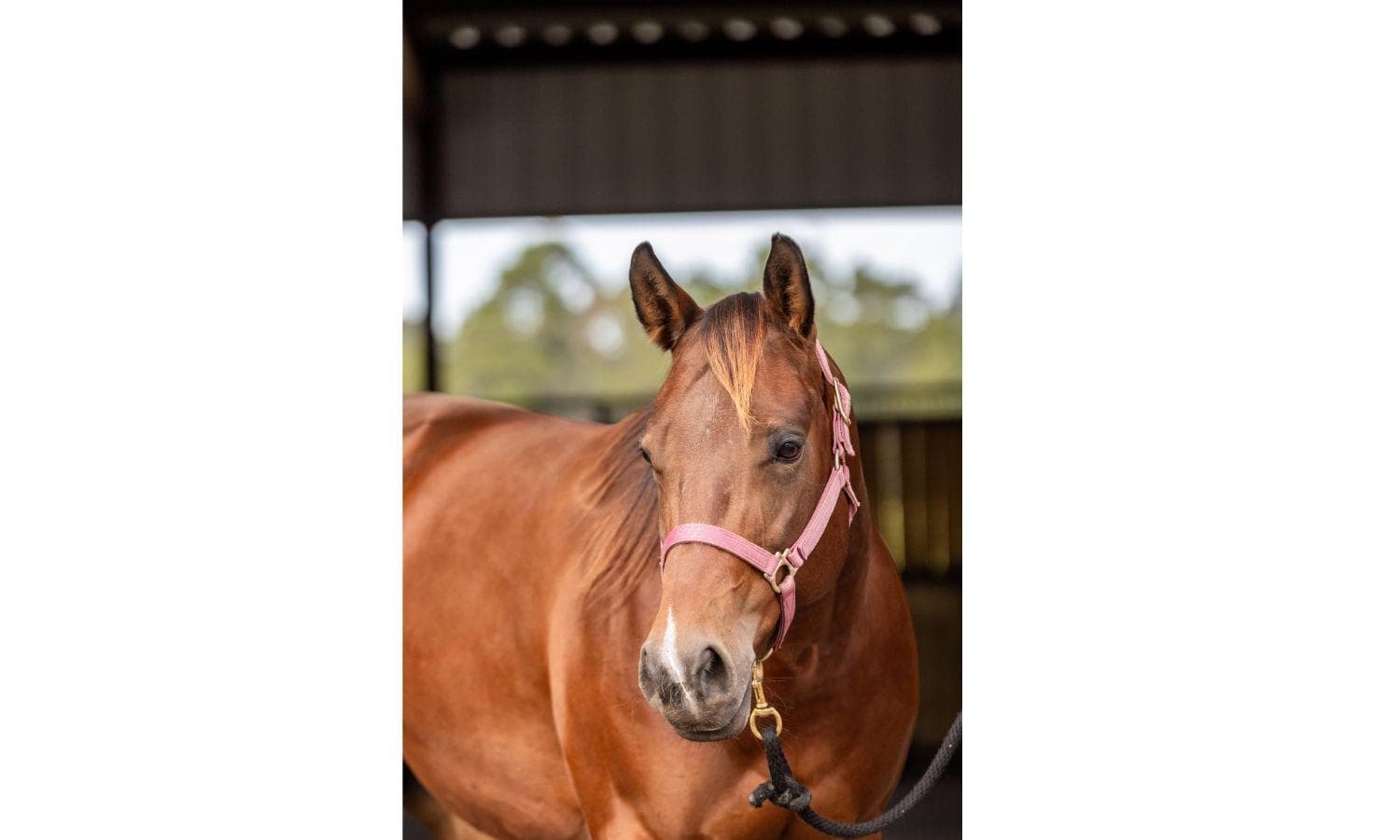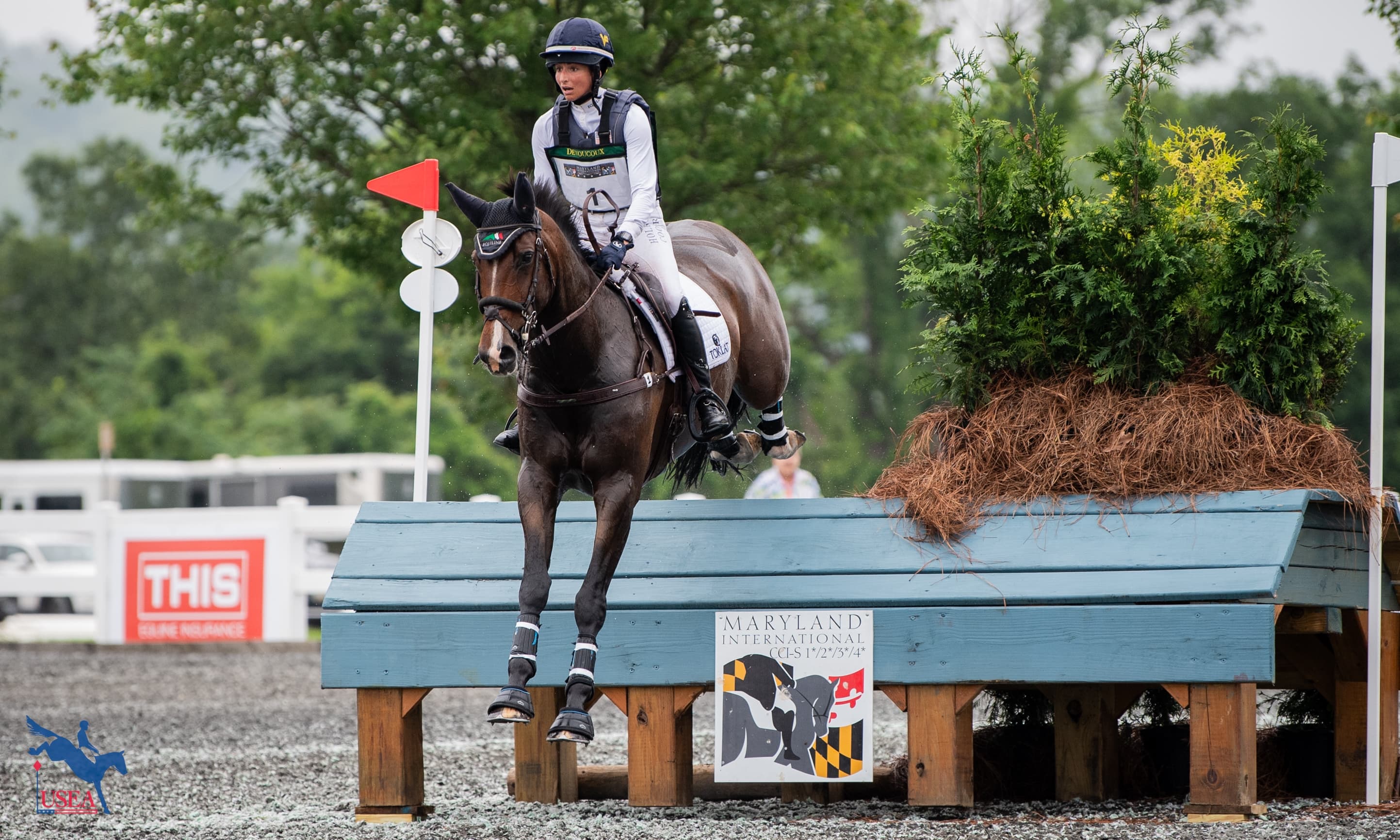Top 10 Tips for Introducing Your Horse to Cross-Country with Tim Bourke

A horse’s first steps out in the cross-country field determine the foundation upon which his entire cross-country education will be laid. How can you give your horse the best chance of success? What are some of the ways you can help teach your horse about cross-country jumping?
“Once you’re safe, you’re able to turn in each direction and you’re able to stop and go, horses should be out schooling cross-country,” said Tim Bourke, Irish five-star eventer and trainer and recipient of the 2019 Captain Mendivil-Yucupicio Award. “Cross-country at that point may be stepping up and down a tiny bank or walking through water or popping over little logs, but I think it’s super important for horses to understand where their feet are.”
Bourke shares his tips for getting your youngster introduced to cross-country jumping.
Tim Bourke’s Top 10 Tips for Introducing Your Horse to Cross-Country
- I am obsessed with the quality of the canter. I think that when riding cross-country we have to be able to ride in a controlled manner going forward so we have options when we get the fence, whether it be adding your leg to maintain what you’re doing or adding your leg to collect to be able to add a step. Always go with your gut instinct.
- When I’m trying to teach young horses to go cross-country, I think it’s super important to go with appropriate help – a horse that knows what he’s doing. Go out in a group so if you do run into bother you can always get a lead . . . Your horse is bound to scare or overface himself at some point, that’s why you bring a horse along that knows what they’re doing.
- Take small bites of the apple – don’t try and take the whole thing in one go. If you’re going schooling it may be the case that you achieve something very simple on the first day and the horse need to go home and have time to digest what he’s just seen and learn from it. You can overface them by asking question after question after question.
- When you are cross-country schooling there are two types of obstacles: There are your jumps – your rolltops, tables, corners, skinnies, – anything the horse has to jump. Then there are your footwork obstacles, anything where the horse’s have to be able to use their feet to achieve the obstacle – banks, ditches, changes of terrain, and water. When I go cross-country schooling, I always try to start with some form of a footwork exercise to get them started.
- My favorite footwork exercise to start over is a bank. I think that going up the bank is so much easier than going down the bank. Going down the bank is similar to jumping a ditch – there’s a moment of commitment where the horse goes to step back and can scare themselves. The upbank, you can get away with way more mistakes.
- In the last moment when the horse decides to do the exercise, it’s up to you as the rider to reassure them and make sure that you’re quite positive on the last step to make sure that they follow through with actually stepping off the bank or actually jumping the ditch.
- If, for instance, I’m going to step up a bank and the horse is not wanting to go, my job is to be a bit of a nuisance on his back to move their feet so the pressure stays on. If we can become a nuisance to them and another horse walks past up the bank, it’ll give my horse confidence to follow the other one. If they do the correct thing and step up the bank, the pressure comes off and you reward them and straight away go around and repeat the exercise.
- If you train your horse to go away from your aids when you ask them to, you tend to have a horse that believes and trusts in you in the long term.
- I think the pace is very important when you’re trying to teach a horse these exercises. I always start with the bank at the walk. That way they learn where their feet are and they are able to use their head and neck to balance and be able to step up and down. When it comes to jumping the ditch, I do the same thing – approach at the walk. You want them to think about landing in the canter, so I will be aggressive about adding that aid to make them come through and land in the canter.
- I think riding horses should stay the same approach from start to finish – as they progress in their training, horses should be ready for new obstacles and should understand them. When approaching skinnies, narrows, or corners, think about riding the line and not the distance. If you ride the line you can react to the distance. If you stay on your line in a forward balanced canter, you can react accordingly and still have enough canter to collect from that and make the distance work.














